Before I continue with the rest of our time on the ship, I want to say a little more about how the landings worked. I already wrote about specifically how we went back and forth from ship to land via zodiacs. Here’s a little more on the logistics.
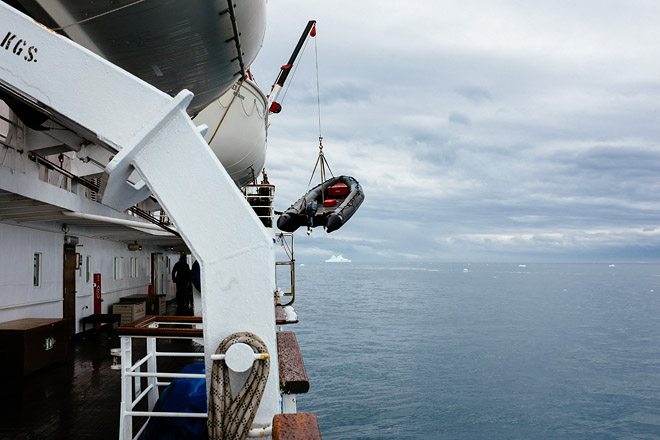
The zodiacs were stored on the top deck of the ship. They used a crane to lower them into the water.
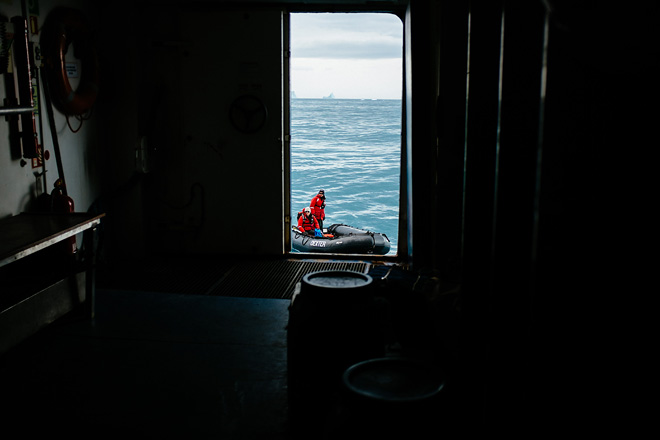
Looking out from the gangway to a zodiac that’s getting ready to head to shore to scout out the landing spot.
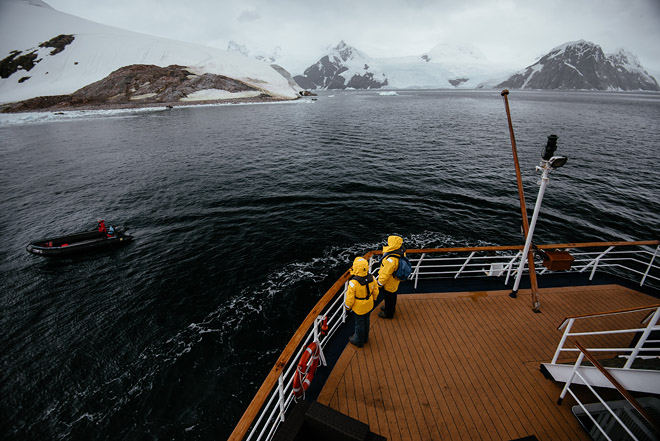
A couple members of the Quark team (including Alex) always went first to the site to check out conditions, to bring emergency supplies, and to prepare for passengers at the site.

Emergency supplies carried to each landing site included food rations and water and probably a lot of other things I don’t know about. Luckily on our trip we never needed any of these, but it is not unheard of for people to get stuck at a landing site when bad weather comes up quickly making it unsafe to drive the zodiac back to the ship. (This is part of the reason they told us to carry extra warm clothing with us onto land. Because with Antarctica, you just never know.)
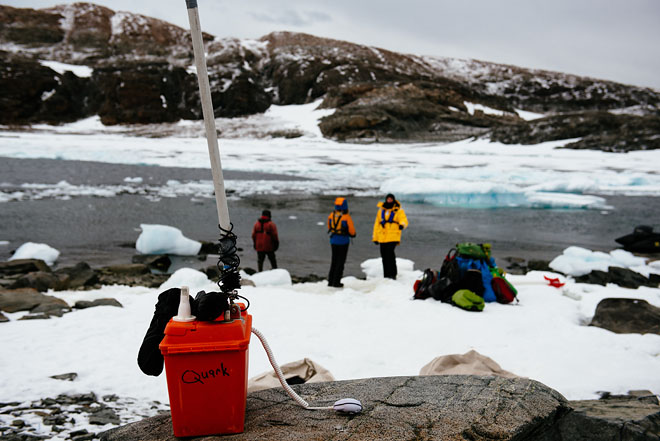
More of the safety equipment the Quark team brought to land.
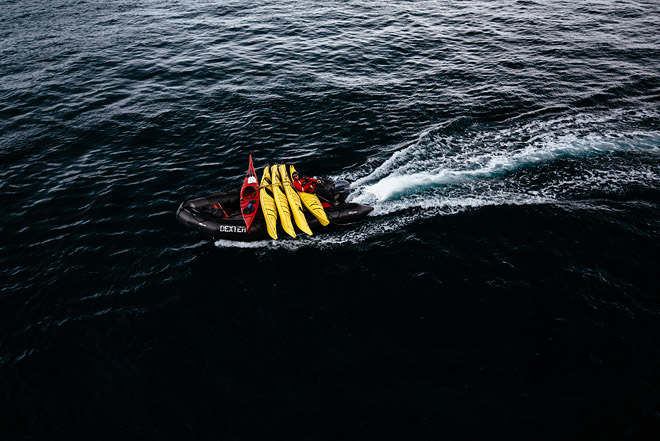
First, the kayaks were taken off the ship and brought by zodiac to a spot in the water where the kayakers would meet them.
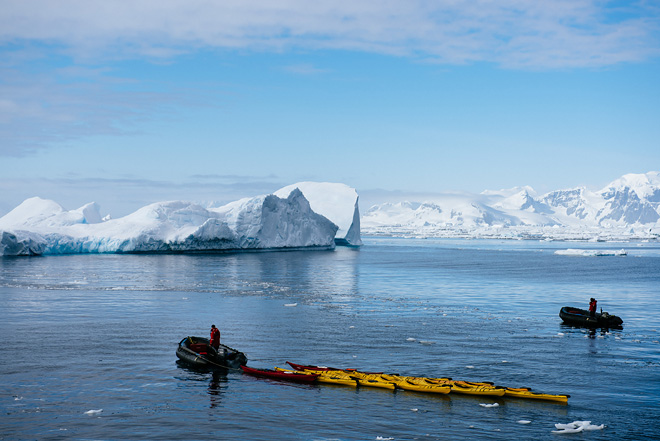
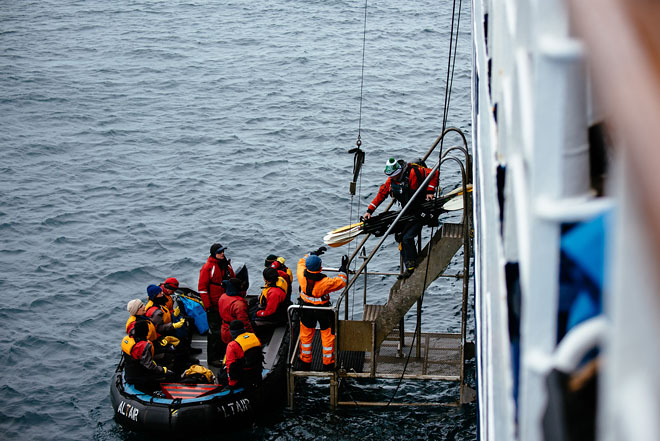
The kayakers were always the first passengers off the ship. They went before any of the regular zodiac groups were called.
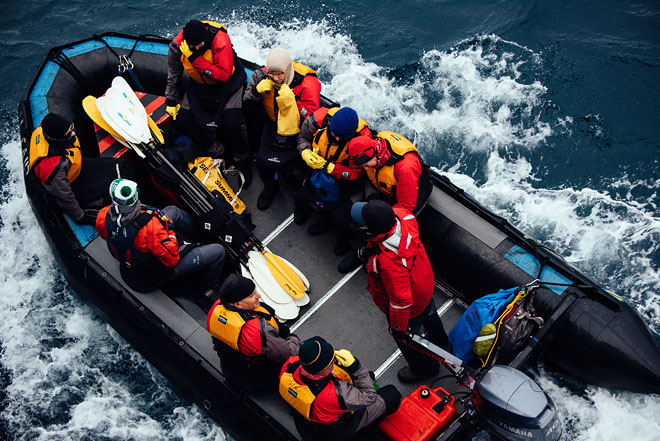
They got into their kayaks in the water from the zodiac.

For the rest of us, we rode the zodiacs to land, and then we were generally allowed to roam around freely once we were there.
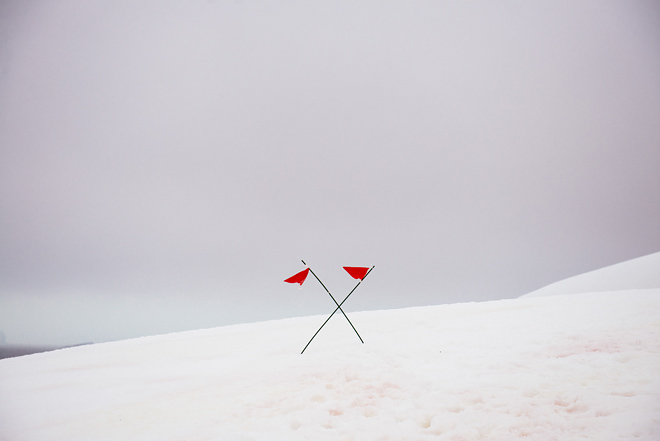
Of course we had to follow the rules about how closely we could approach wildlife, and often there would be areas that were unsafe for us to walk on (hidden crevasses, for one!), which the team marked off with flags. Other than that, we could do what we wanted. There are no predators to humans in the Antarctic, so safety mainly means staying warm and dry, not falling overboard, and being aware of the weather.
So that’s a little more about how the landings worked.
I have so enjoyed readying your blog about your trip to Antarctica….through you I am able to experience this trip of a lifetime…what a thrill!
I’ve signed up for a Quark Expedition to Antartica for Dec. 2017. Your blog has been amazing to read to help me plan my trip. I’ve re-read it several times!
You answered so many questions I had about photography, clothing, zodiacs, meals, penguins, locations and more. Thank you for the time you spent compiling this very useful information. And your photography is stunning. You have quite an eye!
Thanks for the comment! I love that you are finding it useful. You will have an AMAZING trip!!